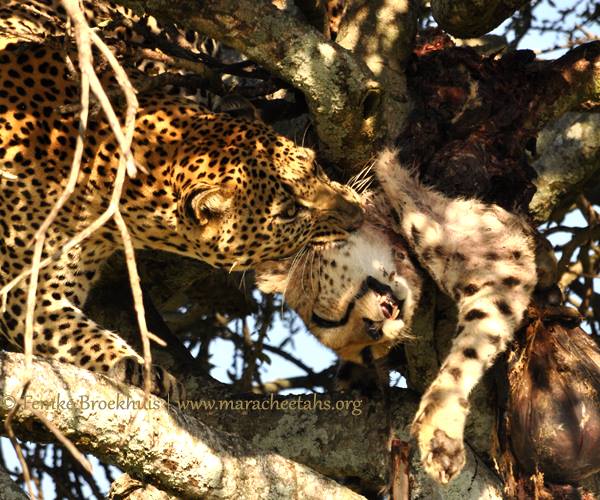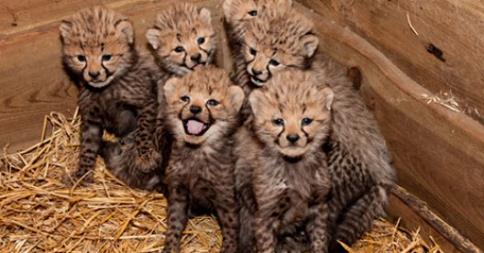This picture from the Mara Cheetah project shows the reality of nature. This leopard killed the cheetah and is actually treating it like any other prey: hanging it in the tree and eating it. The strength of a leopard, leaving no chance to eat and food go to waste, even if this means (or even so!) eating another predator.

It is difficult to see, also for us working with/for both species, but we have to be realistic here too. It shouldn’t affect us more than any other prey animal that gets killed and hang in the tree to serve for dinner, but it still does? It is luckily an unusual sight, not happening too often, but with the cheetah having difficulties to survive in the wild we hope this will stay a rare occasion. Even though we also agree: the leopard has to eat (every coin has two sides)!


